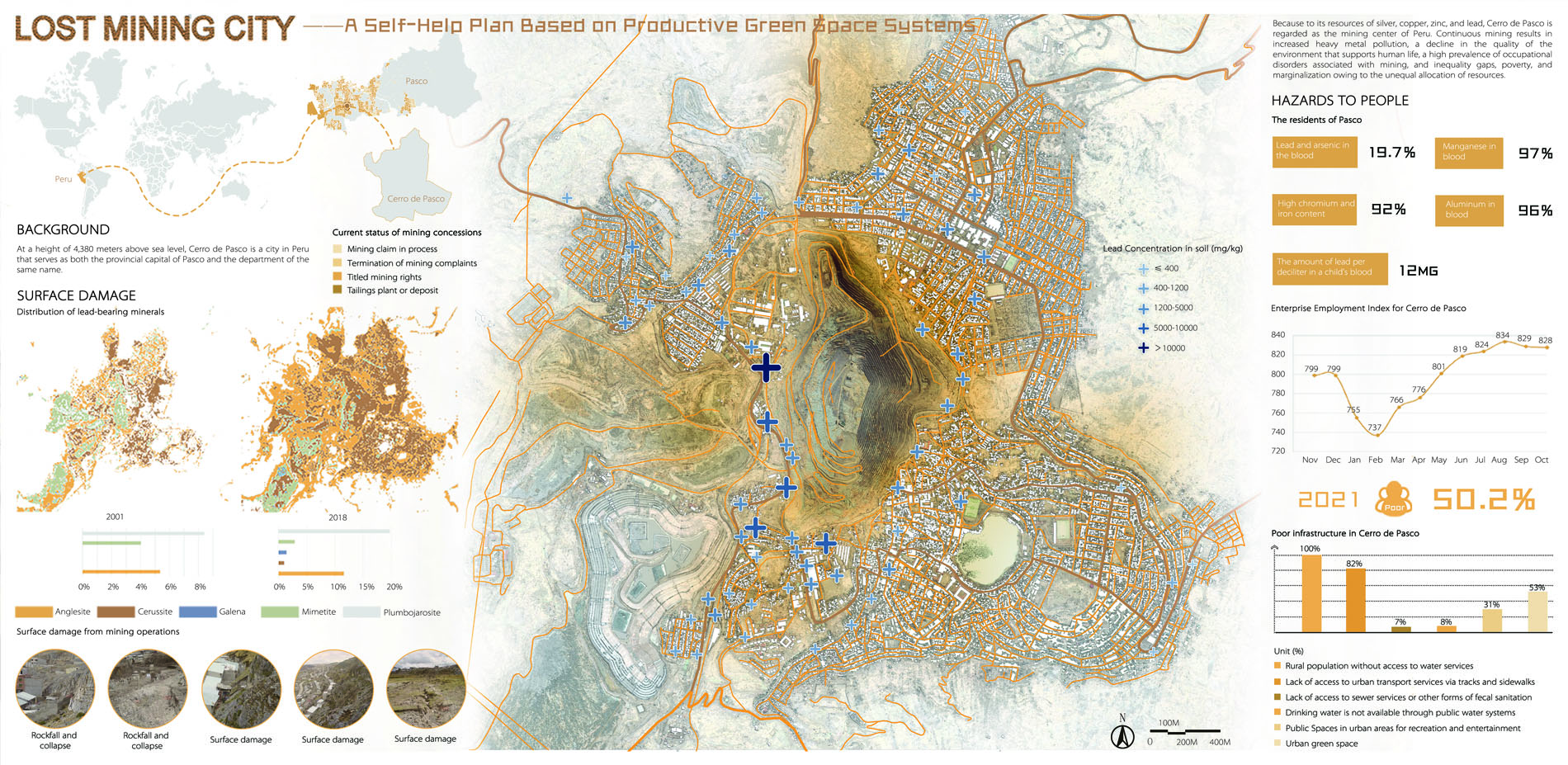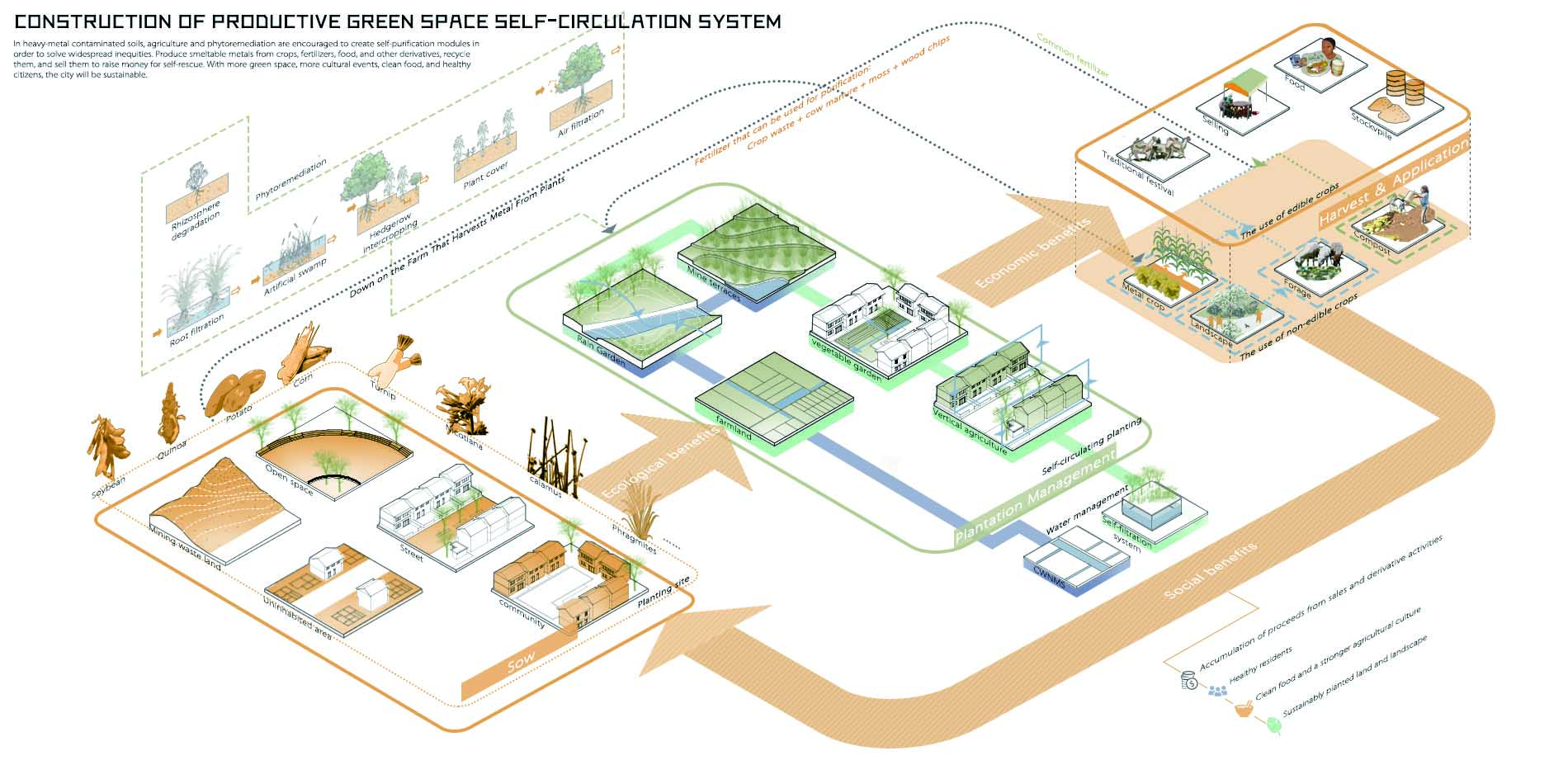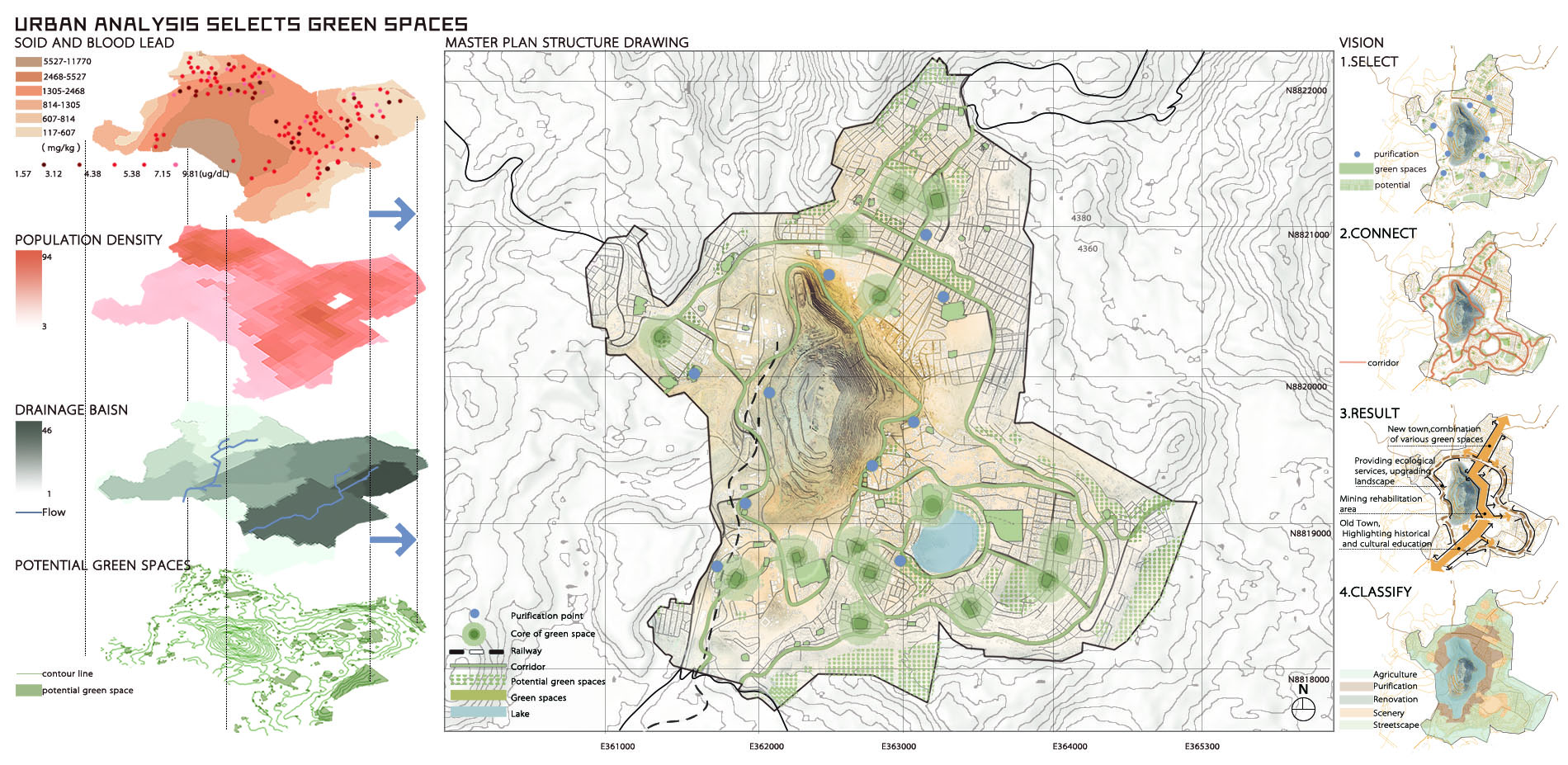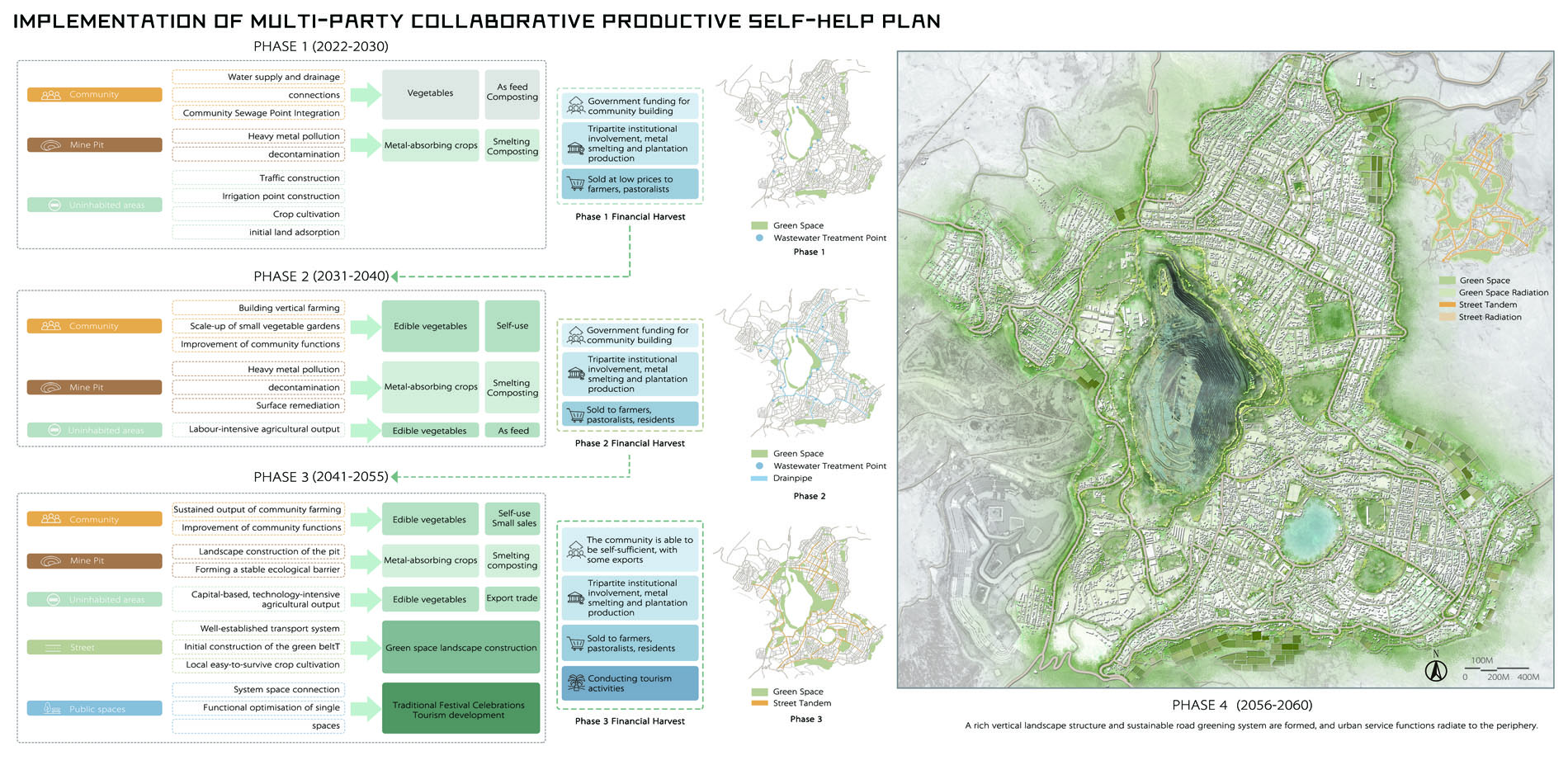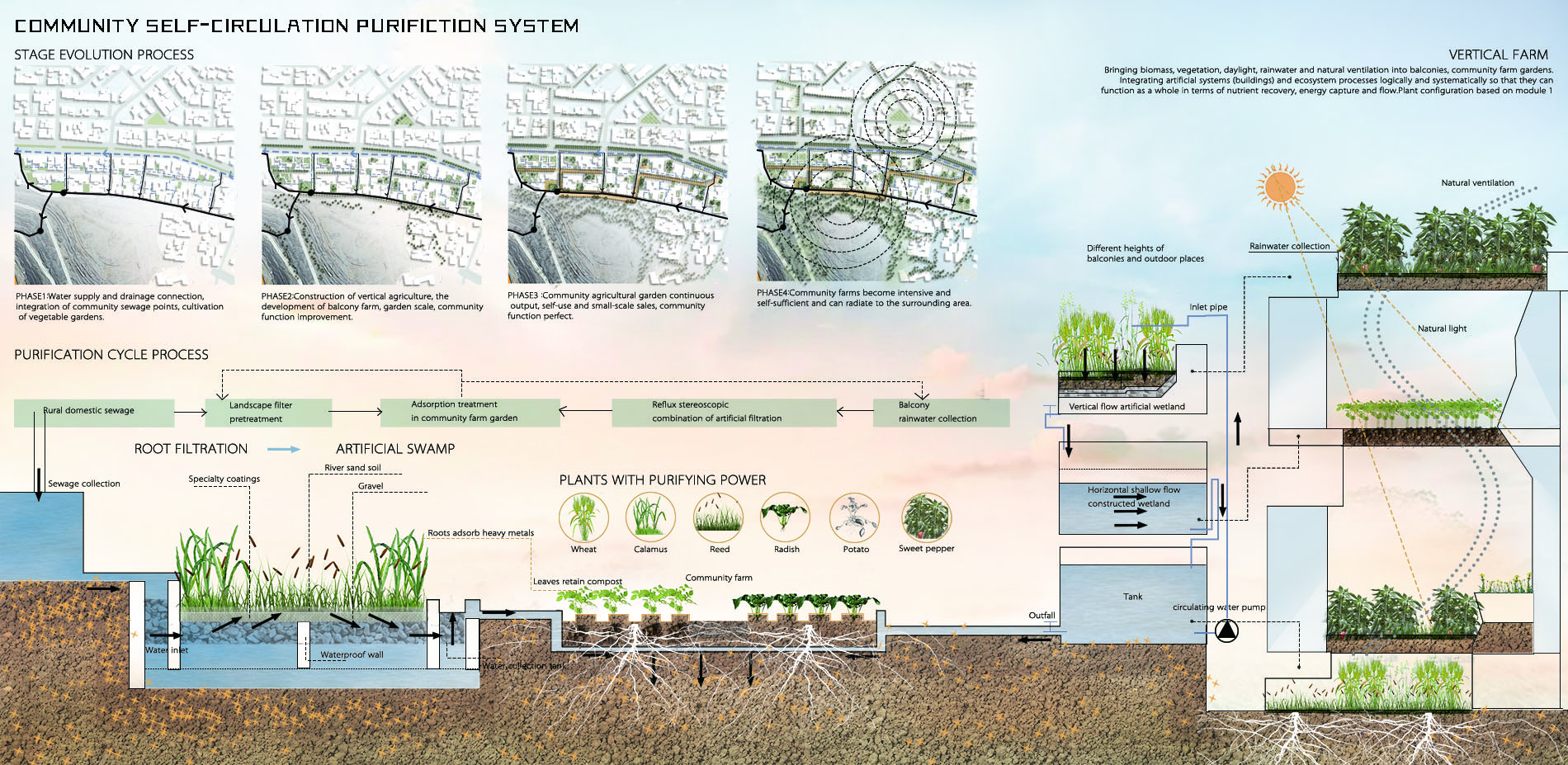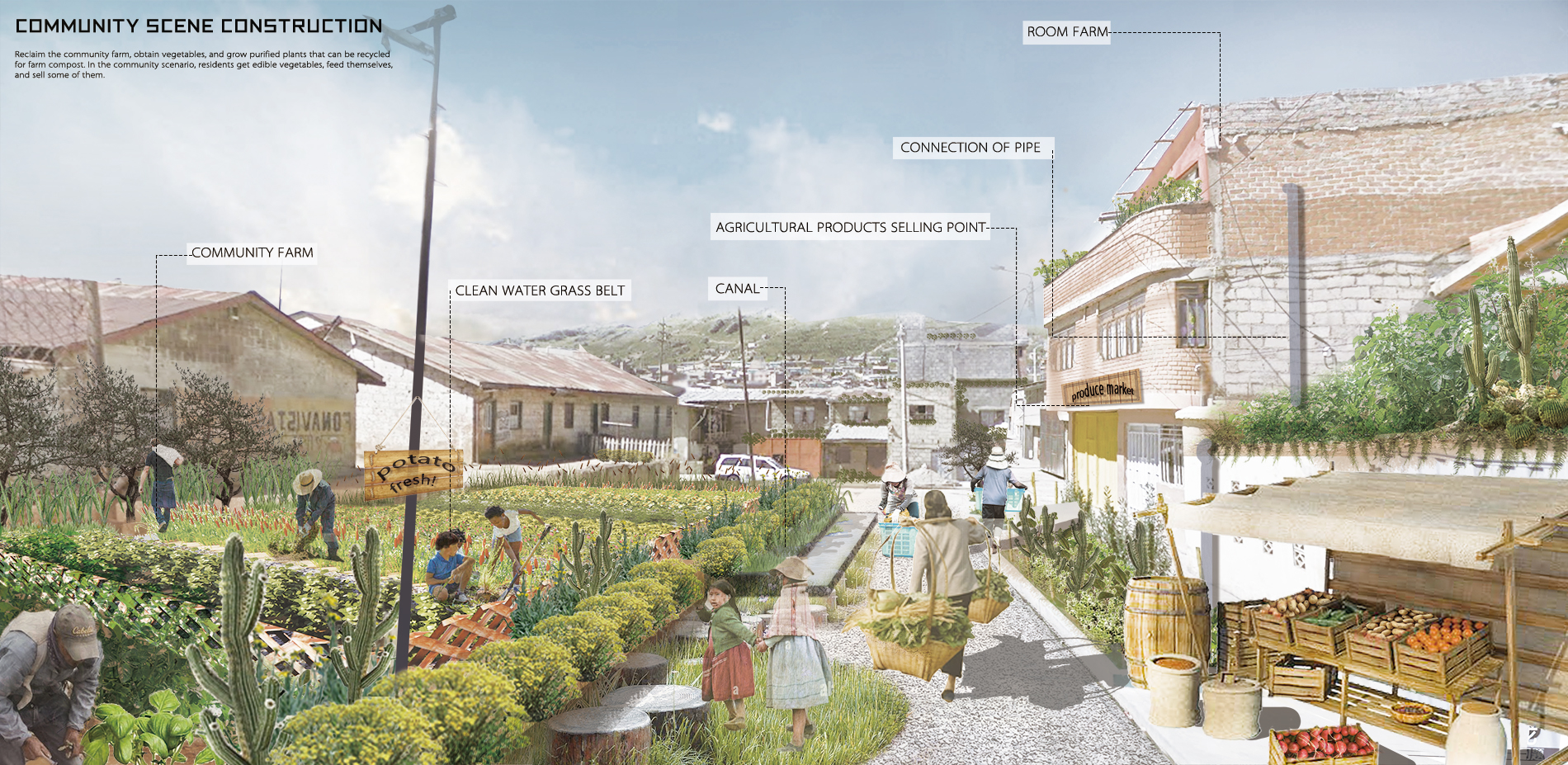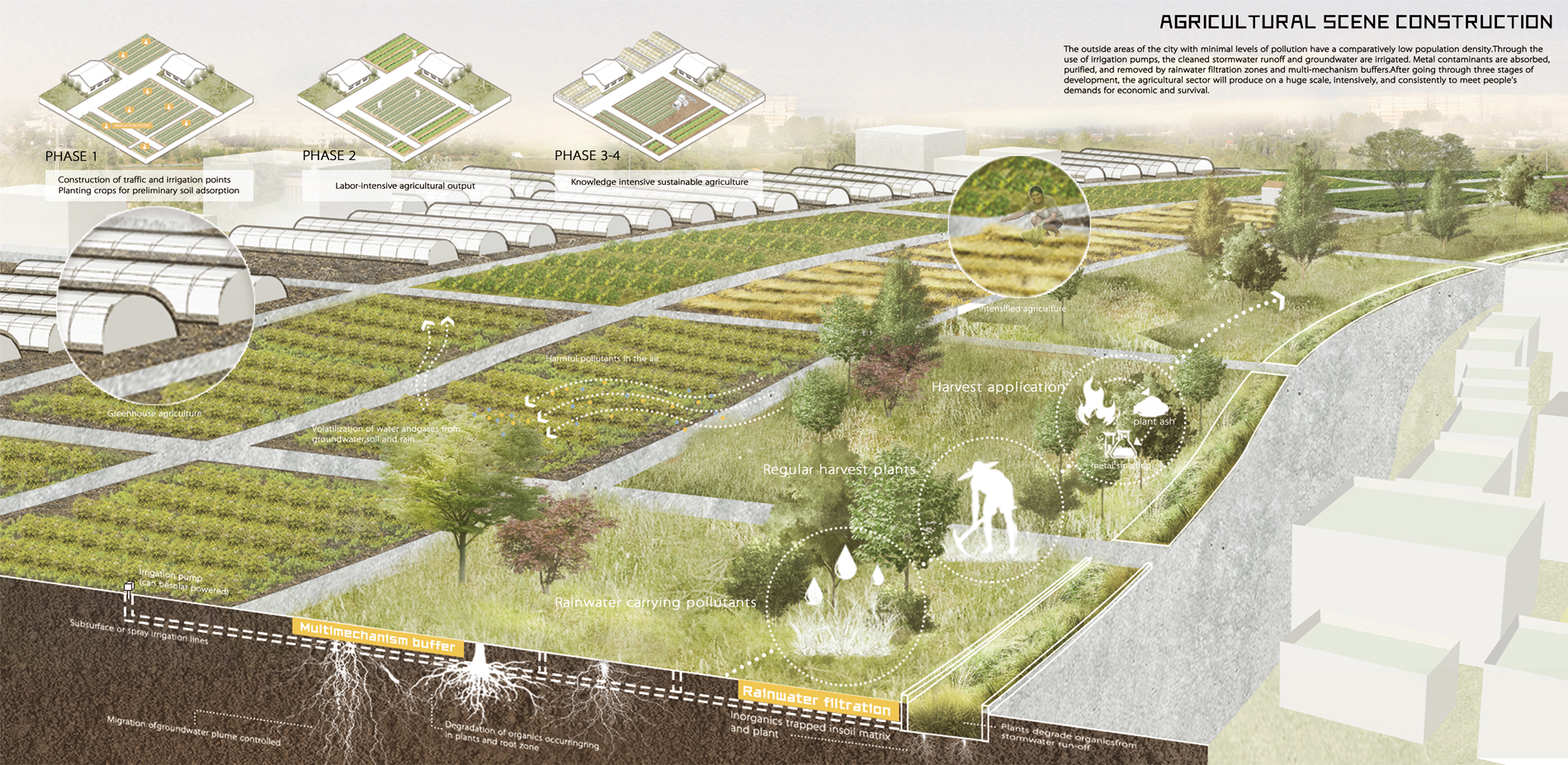A Self-Help Plan Based on Productive Green Space Systems
Honor Award
General Design
Cerro de Pasco, Pasco, Peru
Yu Wang, Student International ASLA;
Jiayan Zhou, Student International ASLA;
Yuhan Liu, Student International ASLA;
Xinyu Li, Associate ASLA;
Xinyi Bao, Student International ASLA;
Faculty Advisors:
Min Wang;
Huazhong Agricultural University
Beautiful graphics, detailed analysis, and graphic explanation of the issues. Reflects ways of community and agricultural sustainability.
- 2023 Awards Jury
Project Statement
The urban structure and public areas of Cerro de Pasco have been permanently harmed by the site's ongoing mining sector expansion. We needed to find new ways to strike a balance between urban development and the lives of its residents because, ironically, the expansion of the mining industry is a source of economic development for the city. The idea was inspired by agriculture, the second-largest industry in Cerro de Pasco. People and the land make a healthy connection through the development of a self-help network that relies on the plant purification module of crops. The city also develops a self-sufficient cycle system through four stages of sustainable evolution to create the ideal productive green space system.
Project Narrative
In recent years, mining conflicts in Peru have mostly occurred in the Andean highlands, where heavy metal pollution, environmental harm, corporate social responsibility violations, and worker strikes have resulted in financial losses and social discontent.
Since 1901, when the Mining Investment Corporation was established, Cerro de Pasco, the nation's mining capital, has been engaged in extensive mining. Current mining practices prevent any sustainable growth.
The area has been declared a state of environmental emergency - the city's heavy metal pollution is expanding, surface damage is getting worse, and mining pits are expanding to engulf the city's border homes and even traditional cultural squares and buildings. The importance of health, inequality gaps caused by unequal resource distribution, poverty, and marginalization are also rising. The prevalence of occupational disorders in the mining industry is still high, metal concentrations in soil and water are significantly higher than the national legal limits, blood levels of inhabitants are higher than healthy levels, and social occurrences like environmental conflicts are widespread.
The local administration attempted to move the city "out of public need and national interest," but without success. The primary issues at the location continue to be the growth of the mine, heavy metal pollution of the soil, significant surface degradation, and community dysfunction.
The design site is situated at an elevation of 4380 meters in a highland tropical wet and dry or savanna environment, with an area of around 14 km2 and 74,975 inhabitants (2023). We examined and researched the distribution of the local population, land pollution, urban industry, regional climate and vegetation, surface water catchment patterns, and the distribution of green space, among other things. A productive system of green spaces makes it possible for Cerro de Pasco to implement a sustainable self-help plan.
Although agriculture is Cerro de Pasco's second-largest industry, the mining boom has made it socially insignificant. Numerous phytoremediation studies have demonstrated that some of the crops utilized in local agricultural production are resistant to metal growth and restoration and that agriculture's capacity for restorative and productive work is a self-help solution to problems with health, poverty, and resource depletion. Being productive will also assure sustainable development, which will address the issue of resource depletion brought on by the city's unending mining.
(1) Building a self-help network, planting in polluted city areas, vacant lots, and open spaces to create various kinds of decentralized purification systems and planting circulation systems. Additionally, residents are urged to grade the planting resources they acquire for processing and use on the go.
(2) Subsequent design spaces can use crop-produced plant purification modules that incorporate native tolerant species.
(3) The effective self-help program develops across four phases of sustained growth.
Cerro de Pasco will be rehabilitated after the 2060s, and its residents will get access to secure and healthy food supplies, clean water, higher family incomes, and agro-pastoral and mining heritage tourism. In addition to creating a sustainable self-help model for mining cities, this system of productive green space also benefits other industrial cities and resource-poor communities.
Plant List:
- Metal tolerant plant: Lepidium meyenii, Asparagus, Potato, Mashua, Plantain herb, Tillandsia latifolia, Cedar, Polylepis, Cactus
- Hyperaccumulator: Tomato, Carrot, Pea, Sweet pepper, Quinoa, Broad bean, Zucchini,Maize, Eucalyptus, Calamus, Castor bean, Senecio rudbeckiaefolius, Cynodon dactylon, Fuchsia hybrida, Vetivergrass, Moss,Reed
